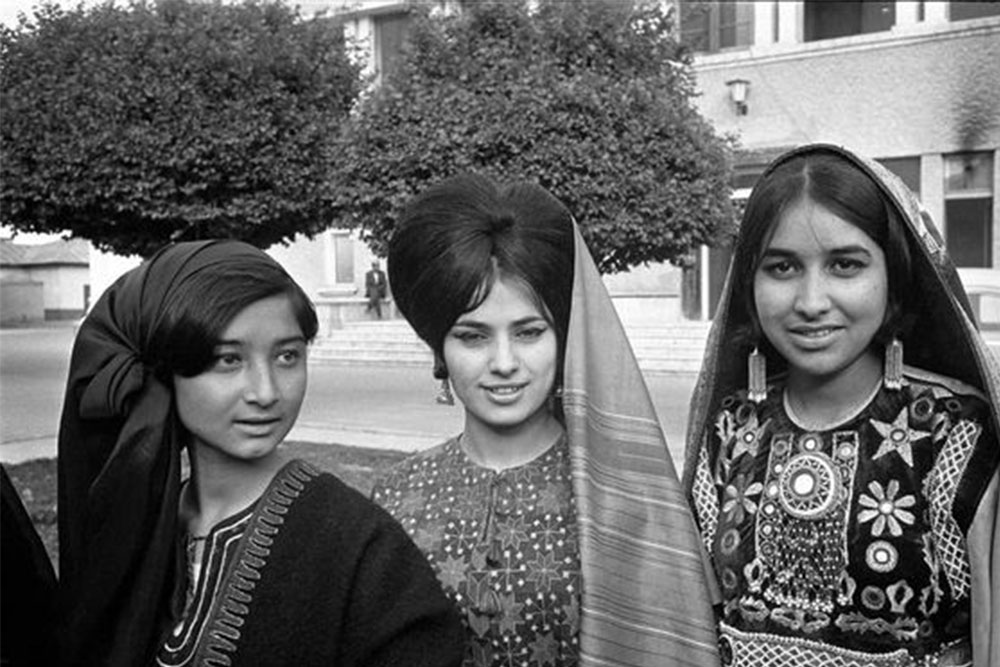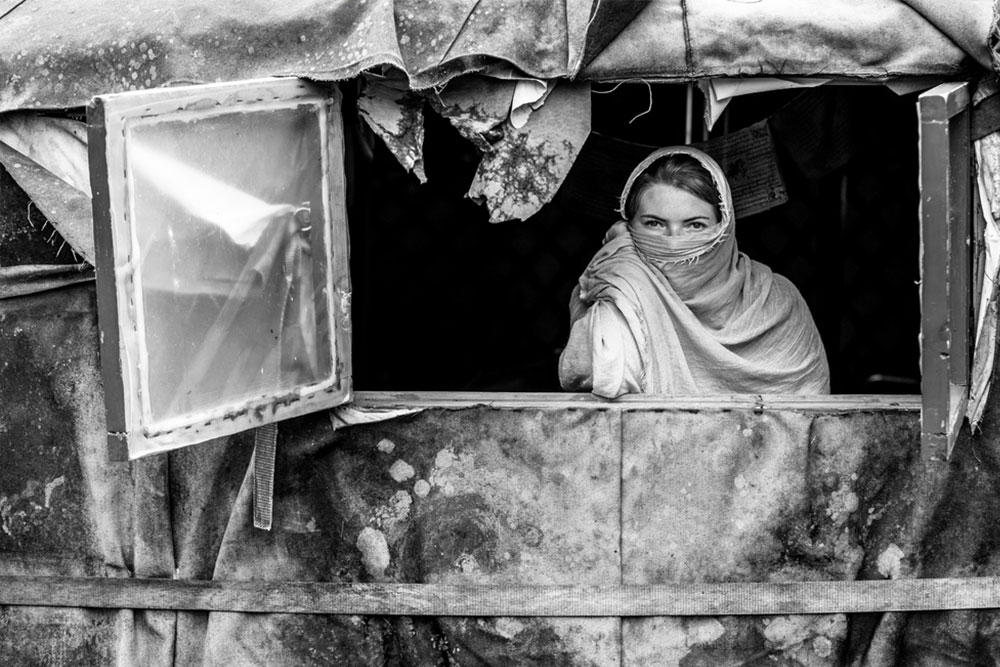Over the last few weeks, the world has been watching in horror, as one of the greatest humanitarian crises of this century unfolded. After 20 years, the Taliban has regained control of Afghanistan, as the US-led military forces are leaving the country. With this, women in Afghanistan, especially those who spent the last two decades working for women’s rights to education, safety, work, and recognition in the public sphere, have been made especially vulnerable.
Despite the fact that the Taliban has made promises to ensure better rights and conditions for women, their history of rule in the country proves that it’s quite valid to be doubtful of their intentions. Here’s what you need to know about the radical group, and what its history with women has been like.
Who are the Taliban?
Taliban literally means “students” in Pashto, and the radical movement and military organisation emerged in northern Pakistan in the early 1990s. However, it must be noted here that the nation of Afghanistan has always had imperialist powers interested and occupying it; the British and Russians were the two leading powers of the modern world who have occupied and ruled the country over the last few centuries, apart from the Americans. The Taliban emerged in the wake of Russian withdrawal (who ruled from 1979 to 1992), promising its core Pashtun provinces in parts of Pakistan and Afghanistan that they would ensure peace, security, and prosperity in the regions on the basis of their own version of the Sharia, or Islamic law, based on an austere form of Sunni Islam.
Clearly, you must remember that the Taliban’s idea and ideals of Islam are not those of the majority of Muslims across the world. And yet, after centuries of excesses by imperial rulers, the Taliban’s ideals and unifying call were welcomed by many, leading to the quick capture of the nation. By September 1995, the Taliban had captured the province of Herat. By 1996, they had Kabul under control, and by 1998, they had brought almost 90 per cent of Afghanistan under the rule of their version of the Sharia.

A cruel hand, not an iron fist
The Taliban’s promise of curbing corruption and lawlessness while ensuring self-rule might have been luring, but soon, their excesses and human rights violations became quite evident. Not only did the insurgent group ban television, music, cinema, sports, and girls’ education beyond the age of 10 years (let’s not forget that it was Pakistani Taliban which shot Malala Yousafzai for going to school), but also introduced strict and inhumane punishments for all types of crimes. In 2001, their destruction of the monumental statues of the Bamiyan Buddha in central Afghanistan also caused international outrage.
But the greatest amount of outrage for their violations have always emerged due to the critically inhuman way in which the Taliban treat women. According to the US State Department’s Archived Report on the Taliban’s War Against Women, dated November 17, 2001, the state of Afghan women before the Taliban came to power was actually progressive. The report says that not only did Afghan women receive the right to vote in the 1920s (quite like women in India and the UK did), but also that Afghan society was slowly moving towards providing equality for women. This is supported by data provided in the report, which states that in 1977, women formed 15 per cent of Afghanistan’s highest legislative body. By the early 1990s, women were 70 per cent of school teachers, and 50 per cent of government workers and university students. Around 40 per cent of doctors in Kabul were actually women, proving that they had access to higher education and the right to practice their professions.

This image of Afghan women before Taliban is being circulated on social media. Image courtesy: Twitter/BholanathDutta
Winds of change for Afghan women
The moment the Taliban took over, the tide turned against women’s rights and progress in Afghanistan. The aforementioned report explains that Kabul was the first and worst hit. The Taliban immediately closed university, school, and medical access for women, forced women to quit their jobs, and stipulated that women must wear burqas when in public, and should never be unaccompanied by a man. Mobility was next to impossible for women in this new regime, which took to punishing flouting of rules with everything from rape, abduction, forced marriages, to mutilations and public executions.
According to a study published in the Indiana International & Comparative Law Report in 2001, titled Women’s Rights Unveiled: Taliban’s Treatment of Women in Afghanistan, these violations against women soon spread across the nation, and went so deep, that Afghan women did not have any sense of freedom left, even within their own homes. Afghan women, even when accompanied by male relatives, had to remain quiet, and not talk or laugh loudly in public. Women who wear perfumes are automatically assumed to be adulteresses, and windows of a woman’s home have to be painted black. Women could not have clothes tailored (how could they, without getting their bodies measured?), or step out in public with a man during the month of Ramadan unless they had legal reasons.

Today’s empty promises
This study also reports that in 1997, women were banned from going to any hospital except those expressly specified by the Taliban, all of which were ill-equipped and didn’t even have running water. Afghan women did protest this complete negation of their rights and voices during the 1990s, but they were brutally suppressed. In 1996, over 150 women peacefully demonstrated against the Taliban’s closing of their bathhouses (these hamams were the only access to running water many women had). The Taliban responded by beating, jailing, and turning a fire hose on these women. Najiba Sara Biabani, an Afghan poet, created a radio show to spread awareness about women’s issues like health, hygiene, education, and domestic problems; she was so threatened by the Taliban that she had to go into hiding. With no political, social, or even personal rights, Afghan women became the targets for the greatest human rights violations.
Today, with mounting pressure on Afghan women who re-emerged in the public sphere after the Taliban was ousted in 2001, to repent, flee, or worse, see history repeating itself. Many are still clinging on to the hope that the Taliban’s promises, while making the peace treaty with the US in February 2020, will be kept. That their assurances of ensuring the rights of women would be upheld by their rank and file. For those, a call-back to the assurances the Taliban gave to the United Nations in 1996 should be enough:
In 1996, the Taliban agreed to abide by all the treaties to which Afghanistan was party, including human rights laws and instruments. The only clause the Taliban provided at that point in time was that the provisions in such laws and treaties which contradicted Islamic law would not be enforced. What followed these assurances is described above.
The Taliban’s idea of Islam and Sharia law, in case it needs reminding, is quite unlike Islamic law followed elsewhere. Even Saudi Arabia has come eons away from where it stood with regards to women’s rights a few decades ago. Given their history of using “contradictions to Islamic law” as a justified means of gagging, suppressing, and killing women and their spirit, can their word be taken seriously now?
Over the last 20 years, Afghan women have come out of the shadows the Taliban relegated them to. The fact that the US’ mismanagement has failed to provide a safety net for these women today is undeniable. Even now, the world remains unsure of where these women will find refuge, that is if they manage to leave Afghanistan and escape the clutches of the Taliban. Though the best of us may hope that the Taliban won’t regress to the 1990s, the fears voiced in recent weeks by Afghan women from around the world, and on the ground in Afghanistan, prove that what we need right now is global solidarity with Afghanistan’s women, and immediate actions that can save their lives and safeguard their rights.